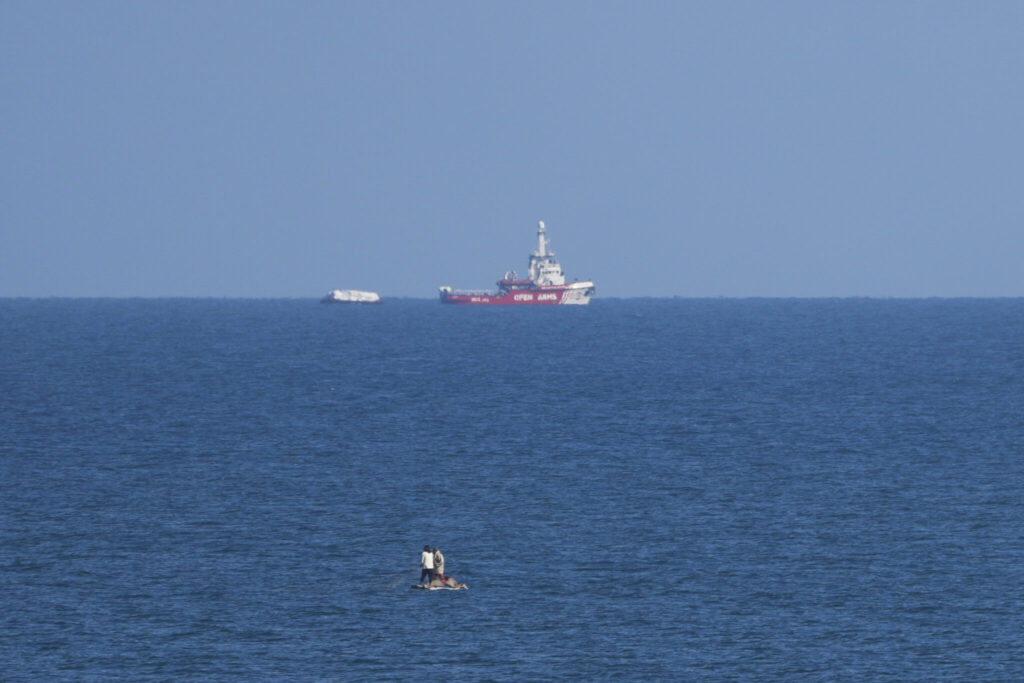A ship carrying 200 tons of aid approached the coast of Gaza on Friday in a mission to inaugurate a sea route from Cyprus to help alleviate the humanitarian crisis in the enclave five months into the war between Israel and Hamas. The ship, operated by the Spanish aid group Open Arms, left Cyprus on Tuesday towing a barge laden with food sent by World Central Kitchen, the charity founded by celebrity chef José Andrés. It could be seen off Gaza’s coast Friday morning.
Quick Read
- A ship carrying 200 tons of aid from Cyprus neared Gaza’s coast, aiming to alleviate the humanitarian crisis caused by the Israel-Hamas conflict.
- Operated by Spanish aid group Open Arms, the ship transported food provided by World Central Kitchen, founded by José Andrés.
- Increased pressure on Israel to allow more humanitarian aid into Gaza led to airdrops and plans for a pier to facilitate aid delivery.
- Despite efforts, the vast needs of Gaza, particularly in the isolated northern regions, remain unmet, with aid deliveries by land hindered by military restrictions and ongoing hostilities.
- The Palestinian Health Ministry accused Israeli forces of an attack near a northern Gaza aid distribution point, resulting in 20 deaths and 155 injuries, which Israel attributed to Palestinian gunmen.
- Amid the conflict, the first Friday prayers of Ramadan at Al-Aqsa Mosque in Jerusalem proceeded without significant violence, despite heightened tensions and restrictions on West Bank Palestinians’ access to the site.
The Associated Press has the story:
1st ship to use a new sea route approaches Gaza with 200 tons of aid
Newslooks- WADI GAZA, Gaza Strip (AP) —
A ship carrying 200 tons of aid approached the coast of Gaza on Friday in a mission to inaugurate a sea route from Cyprus to help alleviate the humanitarian crisis in the enclave five months into the war between Israel and Hamas.
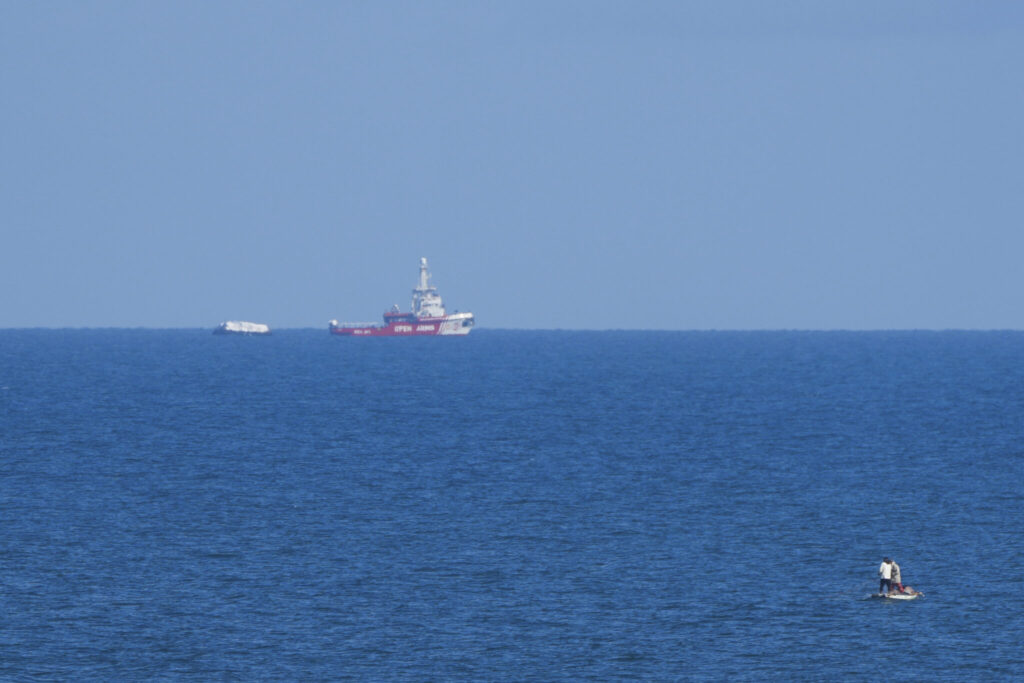
The ship, operated by the Spanish aid group Open Arms, left Cyprus on Tuesday towing a barge laden with food sent by World Central Kitchen, the charity founded by celebrity chef José Andrés. It could be seen off Gaza’s coast Friday morning.
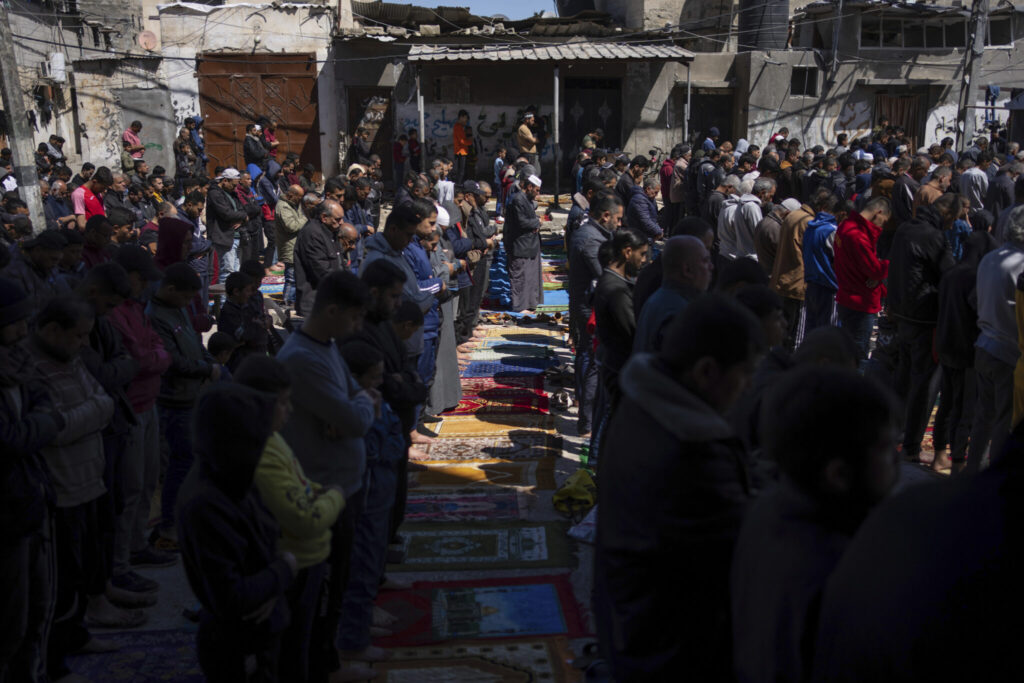
Israel has been under increasing pressure to allow more aid into Gaza. The United States has joined other countries in airdropping supplies to the isolated region of northern Gaza and has announced separate plans to construct a pier to get aid in.
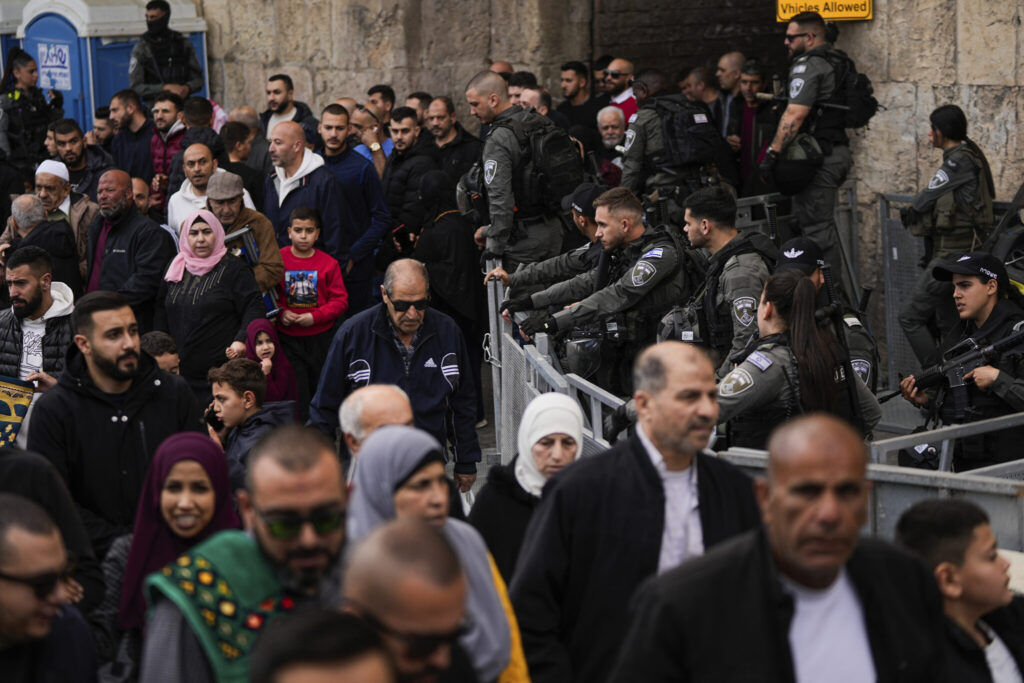
Aid groups said the airdrops and sea shipments are far less efficient ways of delivering the massive amounts of aid needed in Gaza. Instead, the groups have called on Israel to guarantee safe corridors for truck convoys after land deliveries became nearly impossible because of military restrictions, ongoing hostilities and the breakdown of order after the Hamas-run police force largely vanished from the streets. The daily number of supply trucks entering Gaza since the war began has been far below the 500 that entered before Oct. 7.
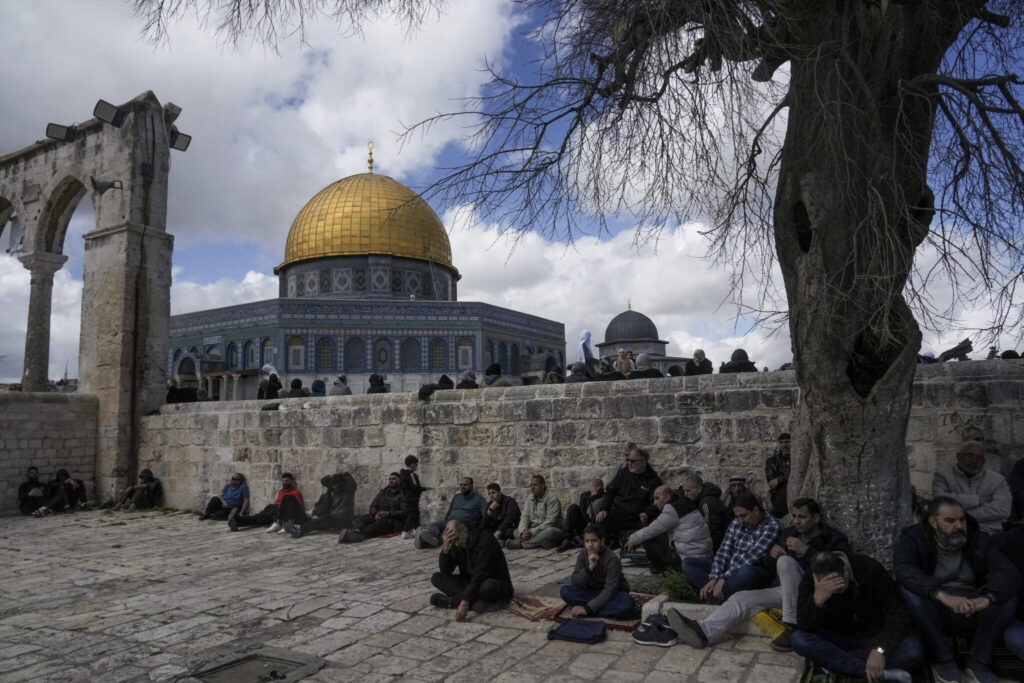
Earlier in the week, Israel allowed six aid trucks to enter directly into the north, a step aid groups have long called for.
World Central Kitchen operates 65 kitchens across Gaza from where it has served 32 million meals since the war started, the group said. The aid includes rice, flour, lentils, beans, tuna and canned meat, according to World Central Kitchen spokesperson Linda Roth.
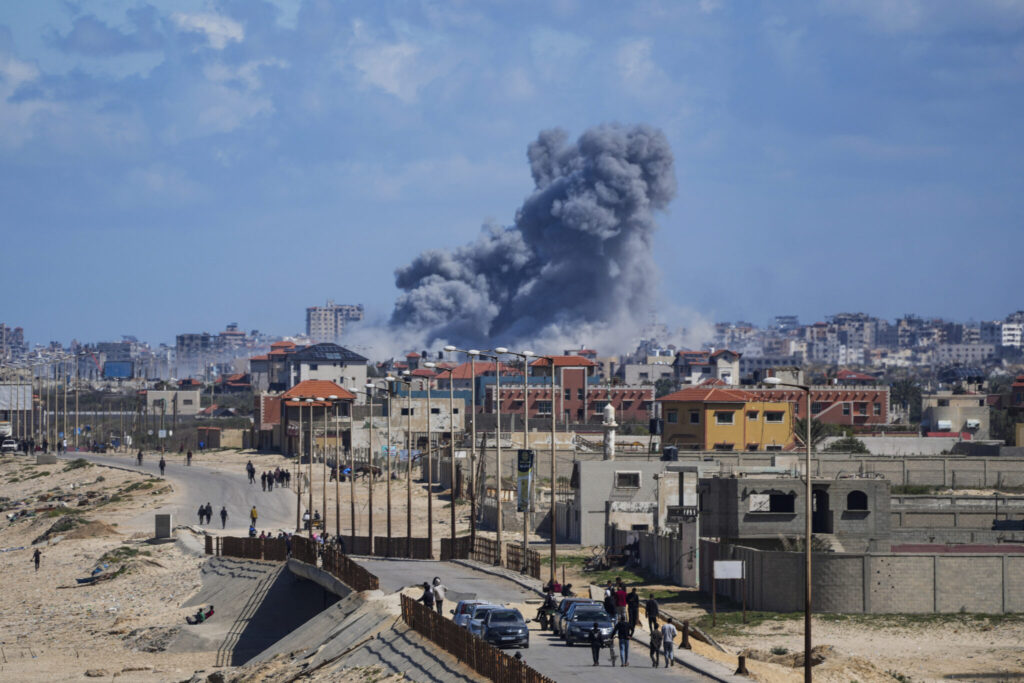
It plans to distribute the food in the north, the largely devastated target of Israel’s initial offensive in Gaza, which has been mostly cut off by Israeli forces since October. Up to 300,000 Palestinians are believed to have remained there despite Israeli evacuation orders, with many reduced to eating animal feed in recent weeks. The aid is a tiny fraction of what is required, but the shipment was intended to pave the way for other larger shipments, officials working on the route have said.
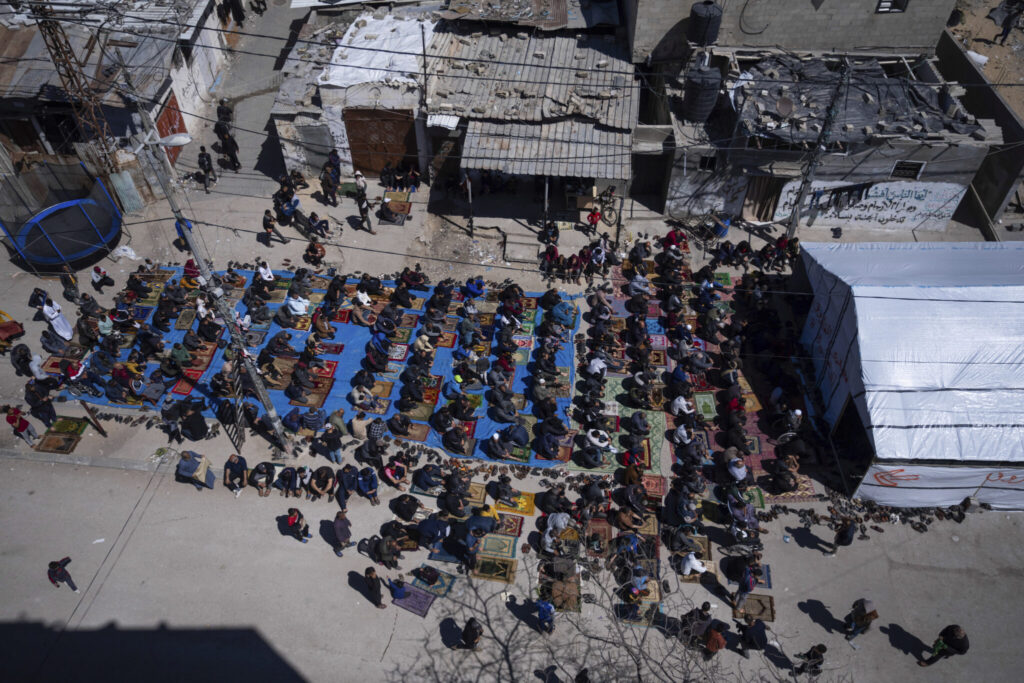
A second vessel being loaded with even more aid will head to Gaza once the aid on the first ship is offloaded and distributed, Cyprus’ Foreign Minister Constantinos Kombos said. He declined to specify when the second vessel would leave, saying it depends in part on whether the Open Arms delivery goes smoothly.
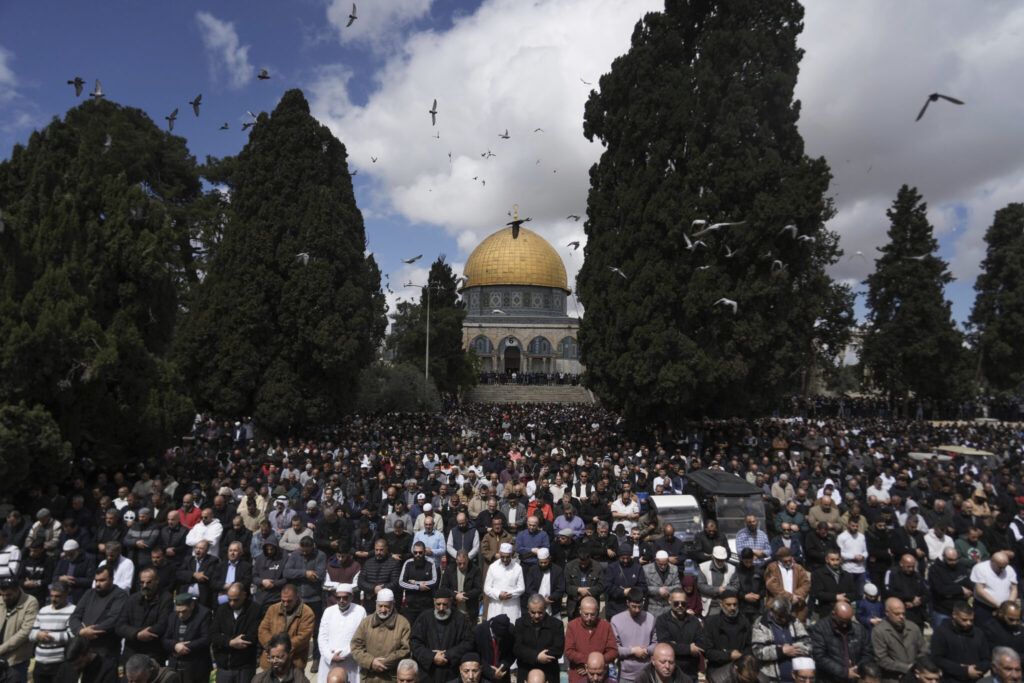
The Israel-Hamas war was triggered by Hamas’ Oct. 7 attack on Israel that killed 1,200 people and left another 250 taken into Gaza as hostages. Israel’s offensive in Gaza has killed over 31,000 Palestinians and driven most of Gaza’s 2.3 million people from their homes. A quarter of Gaza’s population is starving, according to the United Nations.
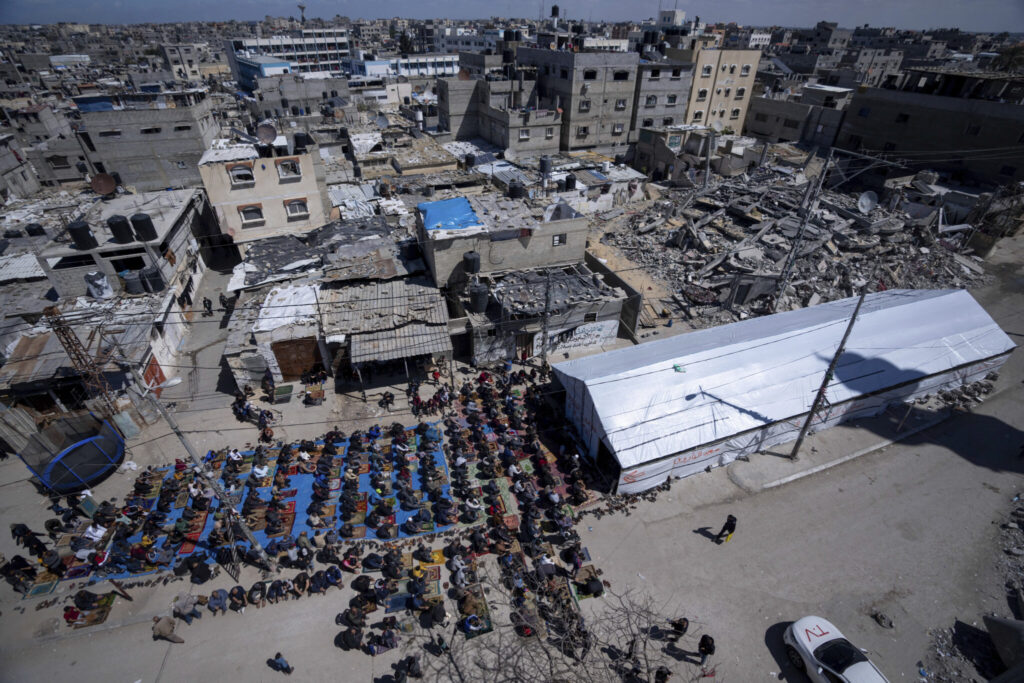
The ship could be spotted from the coast hours after the Palestinian Health Ministry in Gaza accused Israeli forces of launching an attack near an aid distribution point in northern Gaza, killing 20 people and wounding 155 others.
The Israeli military said in a statement that Palestinian gunmen were the ones to open fire and that none of its forces, who were securing a convoy of 31 aid trucks, fired toward the waiting crowd or the convoy. Some of those in the crowd were run over by the trucks, it said.
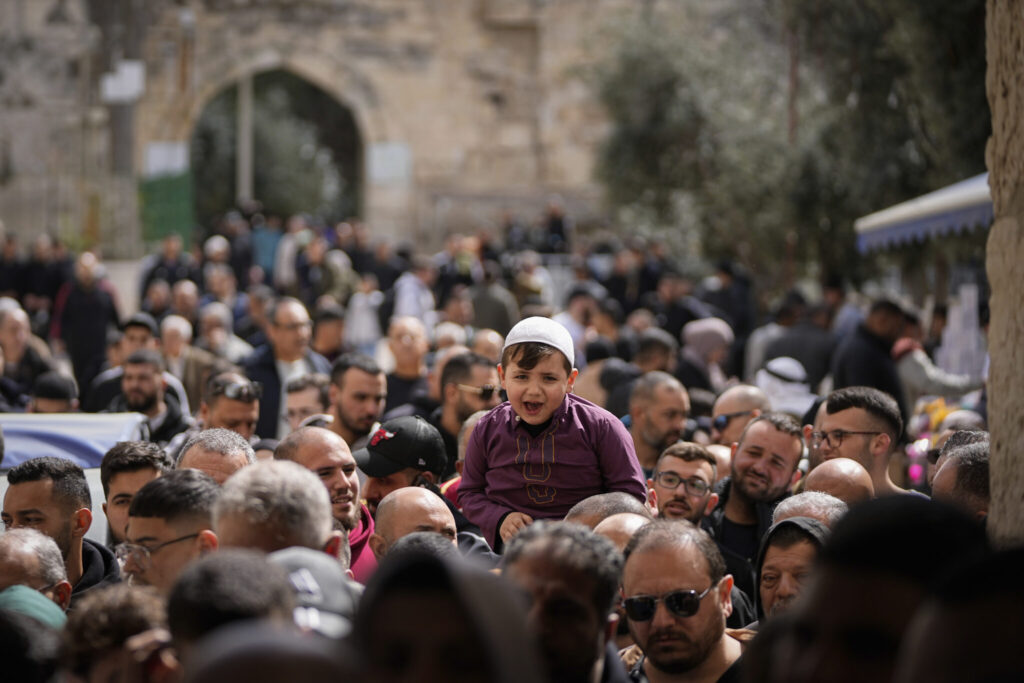
The health ministry said a group waiting for aid near the Kuwaiti roundabout was hit by Israeli shelling late Thursday.
The ministry said Friday that 149 people were killed over the past 24 hours, bringing to at least 31,490 the number of Palestinians killed in the war. The ministry doesn’t differentiate between civilians and combatants in its count, but says women and children make up two-thirds of the dead.
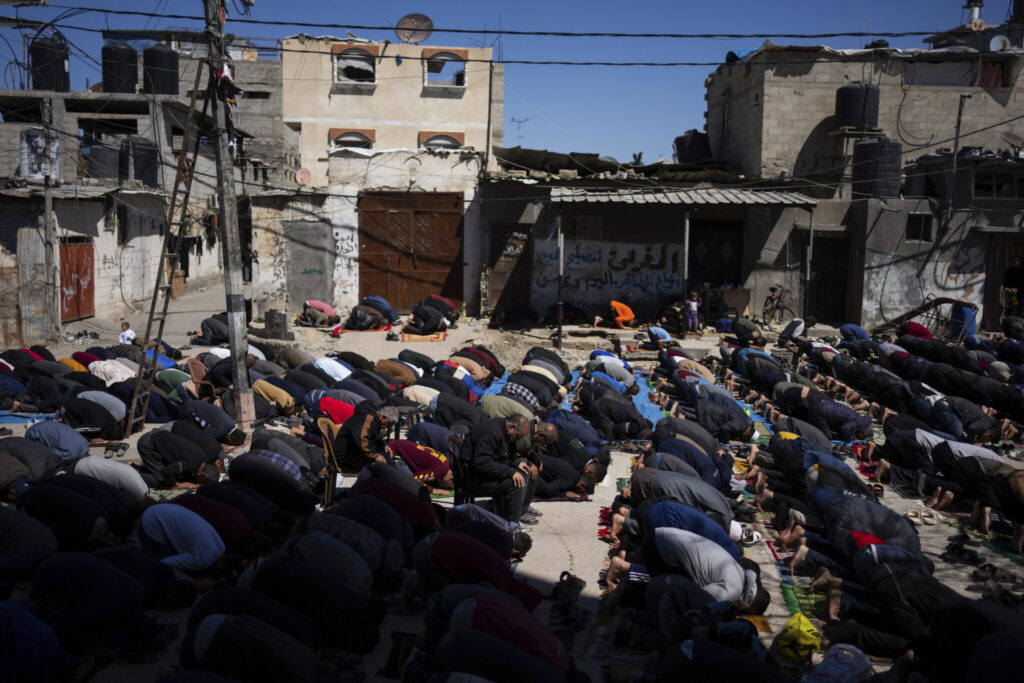
Bloodshed surrounding an aid convoy on Feb. 29 killed 118 Palestinians in northern Gaza. The Israeli military said some of its forces fired at people in the crowd who were advancing toward them. Witnesses and hospital officials said many of the casualties were from bullet wounds. The Israeli military said many of the casualties were caused by a stampede over the food and people being run over by the aid trucks.
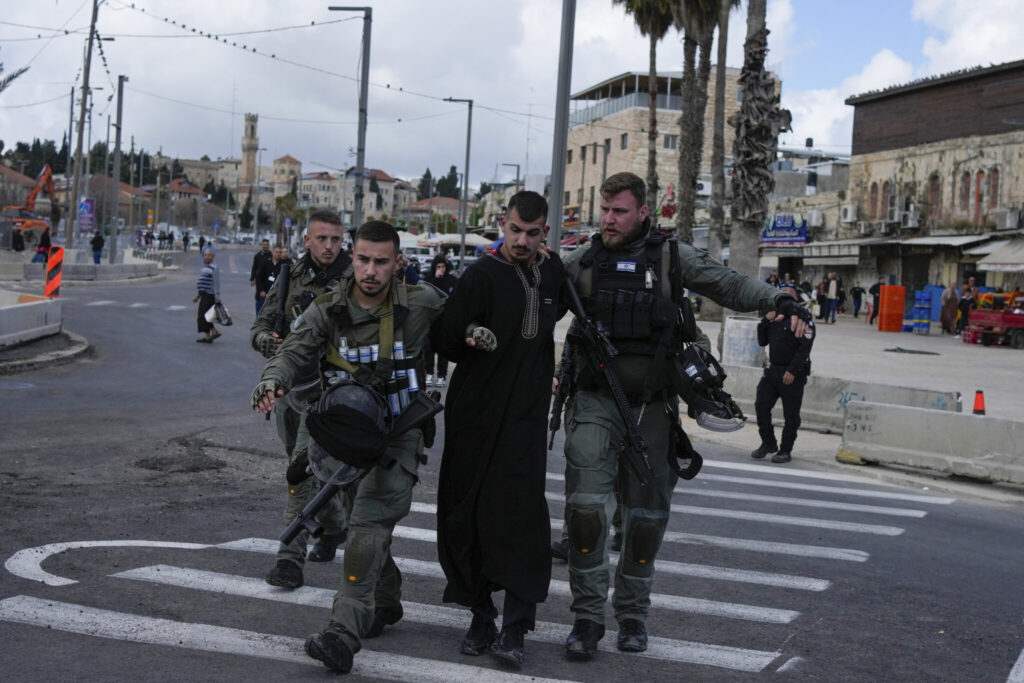
After that, plans for the sea route took shape and the United States and other countries joined Jordan in dropping aid into the north by plane.
But people in northern Gaza say the airdrops are insufficient to meeting the vast need. Many can’t access the aid because people are fighting over it, said Suwar Baroud, 24, who was displaced by the fighting and is now in Gaza City. Some people hoard it and sell it in the market, she said.
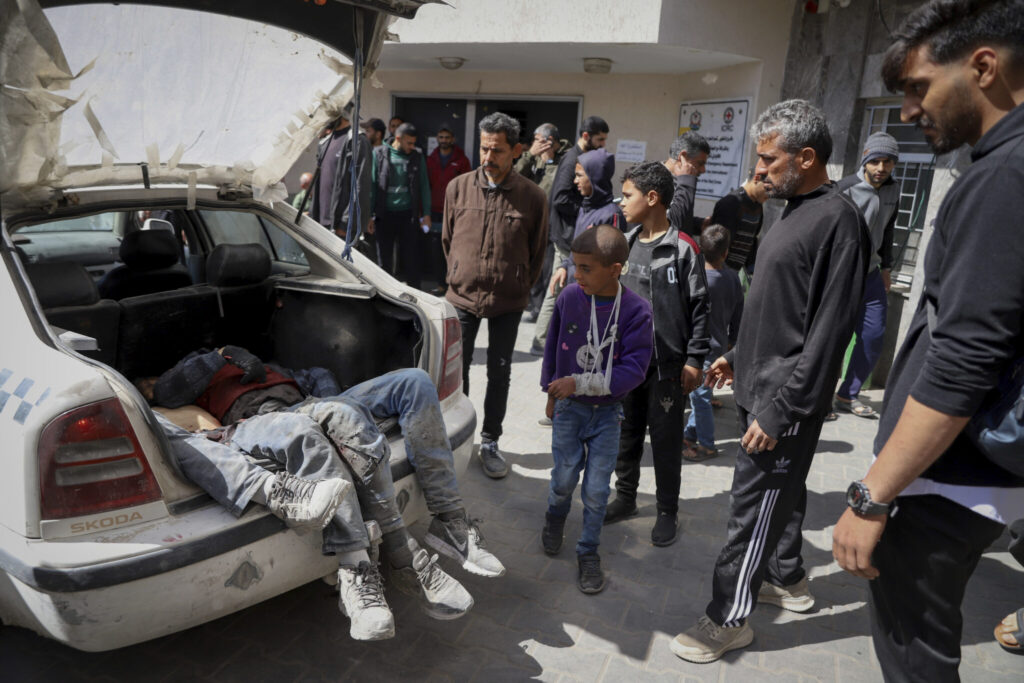
A recent airdrop that malfunctioned plummeted from the sky and killed five people.
Another drop landed in a sewage and garbage dump, said Riham Abu al-Bid, 27. Men ran in but were unable to retrieve anything, she said.
“I wish these airdrops never happened and that our dignity and freedom would be taken into consideration, so we can get our sustenance in a dignified way and not in a manner that is so humiliating,” she said.
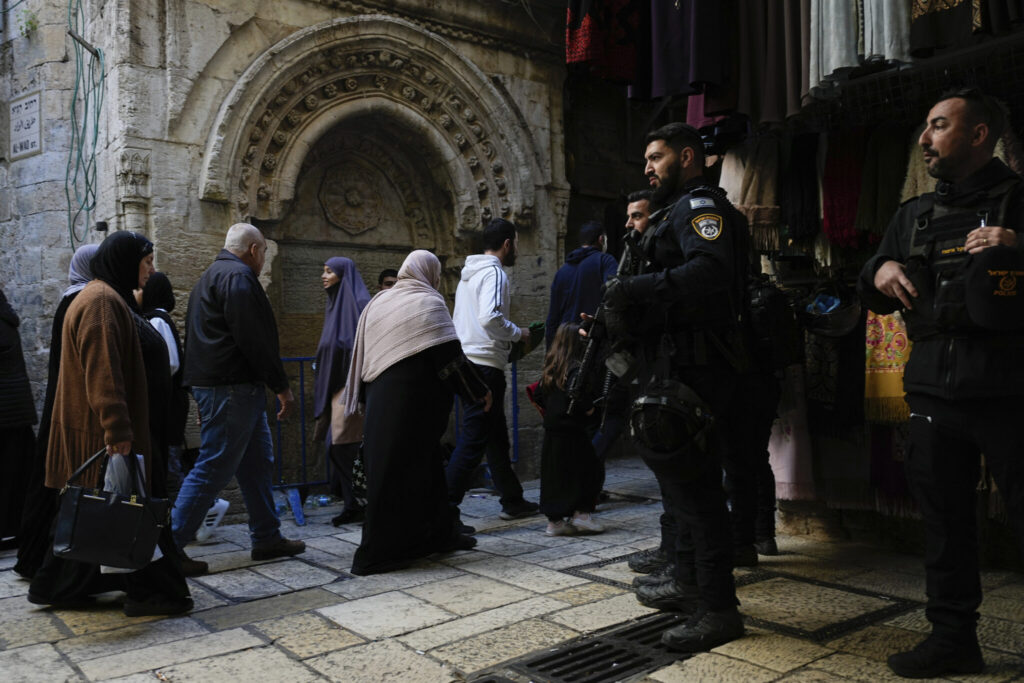
The war has exacerbated tension throughout the region and threatened to flare into broader violence.
At Al-Aqsa Mosque in Jerusalem, the third-holiest site in Islam, the first Friday prayers of the Muslim holy month of Ramadan were held without a major outbreak of protest or violence.
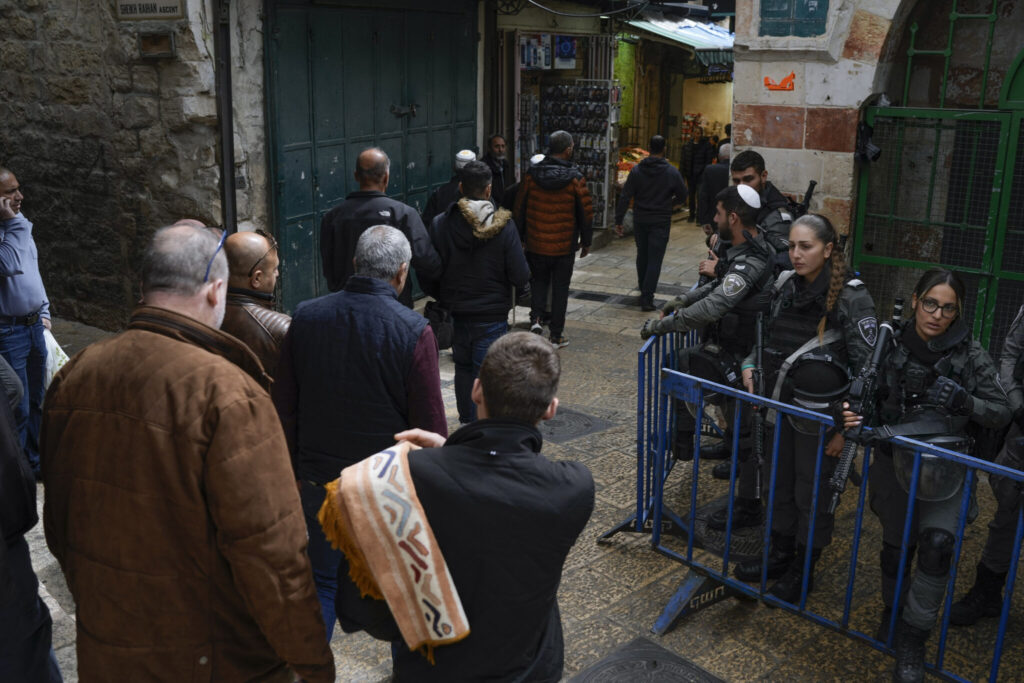
The mosque has been a frequent flashpoint for Israeli-Palestinian violence in the past. Hamas hopes a fresh eruption now would put more pressure on Israel and improve the militant group’s leverage in cease-fire talks.
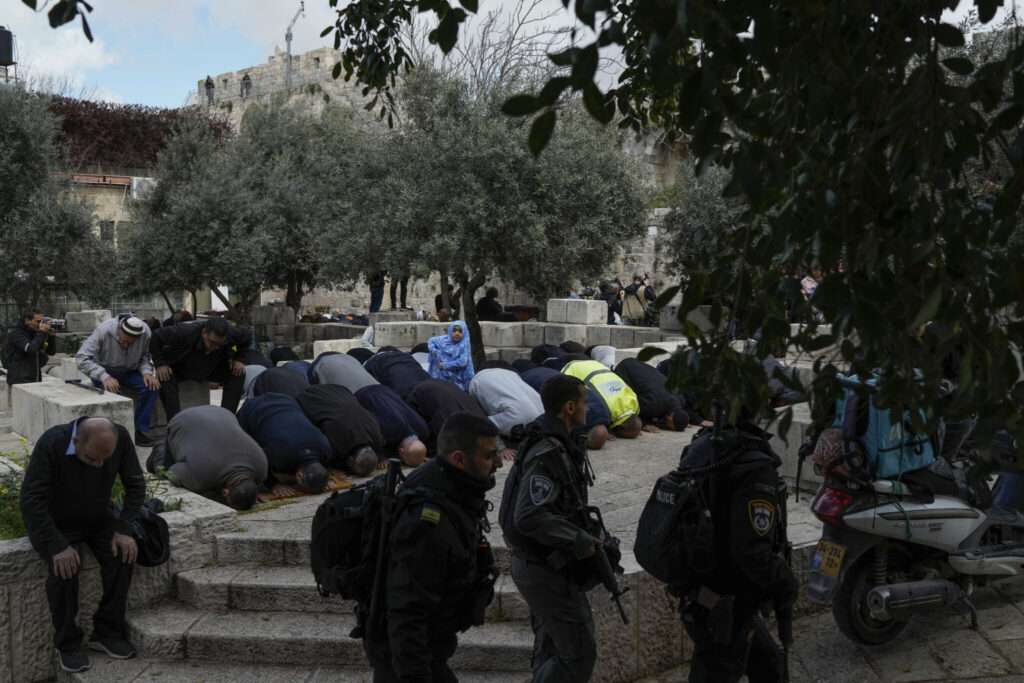
But Israel put restrictions in place limiting West Bank Palestinians’ access to the compound for Friday’s prayers to men over 55, women over 50 and children under 10 and required all of them to have special permits. Palestinians without the permits were prevented from crossing into Jerusalem from the West Bank.
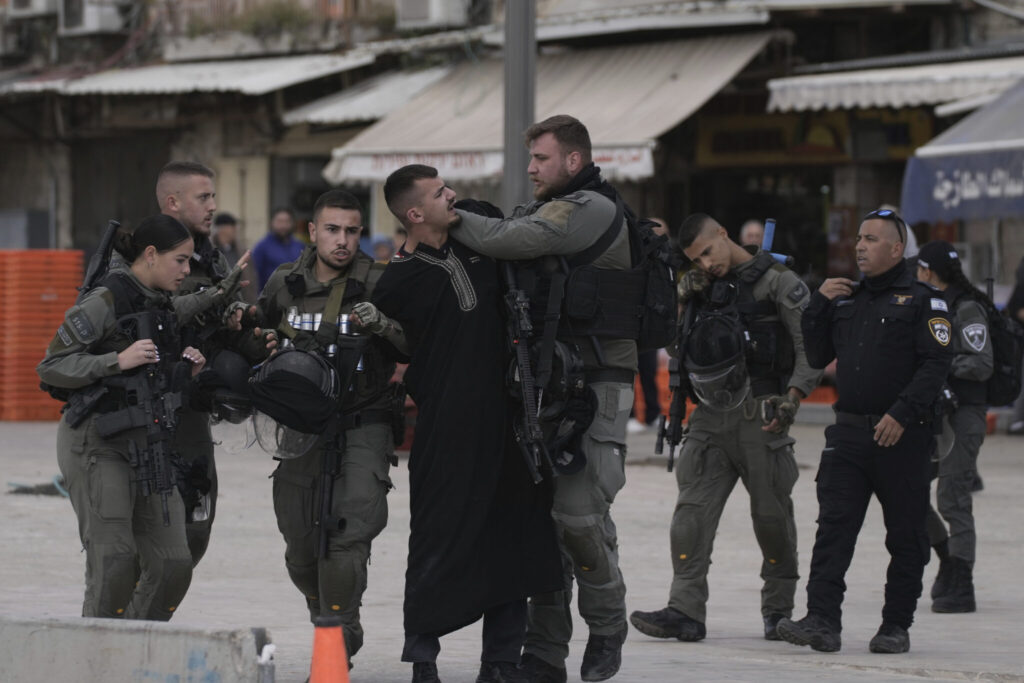
The compound has long been a deeply contested religious space, as it stands on the Temple Mount, which Jews consider their most sacred site.

